

 Gregory
McCracken (2012- )
Gregory
McCracken (2012- )
As
a research associate, my responsibilities include overseeing day to day
laboratory operations including training and aiding both graduate and
undergraduate students. In addition, I am continuing work I began
during my master’s degree here at Dalhousie which focuses on the
landscape genomics of fish in a spatially complex and isolated
freshwater system in northern Labrador. The goal of this project is to
examine the relationship of landscape and life history diversity with
genetic diversity and connectivity in a number of coexisting fish
species. I am particularly interested in how the landscape shapes the
population structure of fish species that occupy distinct niches within
the system.
Email: gregory.mccracken [at] dal.ca
 James Kho
(2017- )
James Kho
(2017- ) Clupea harengus (Atlantic
herring) is increasingly being regarded as a model species for
population
dynamics studies of marine fishes. In fact, some of the main population
concepts in marine fishes like member/vagrant hypothesis or dynamic
balance
concept have been proposed and refined due to herring studies. My Ph.D
project
will investigate various aspects related to local adaptation in the
herring metapopulation
of Northwest Atlantic from the DNA level (testing stability of genetic
differences across cohorts and estimating recent changes in effective
size), to
the gene level (epigenetics between spawning time), and all the way to
the
phenotypic level (common garden on photoperiodicity). Findings from
these
studies are crucial to better understanding of local population
dynamics by
providing the missing link between genetic data and phenotypic data.
 Sarah
Salisbury (2016- )
Sarah
Salisbury (2016- )My thesis project concerns the genetics of Arctic char (Salvelinus alpinus) in Newfoundland and Labrador, Canada. The goal of my research is to investigate the relative influences of colonization history, neutral processes (e.g. gene flow, drift), and adaptation to freshwater/saltwater environments on the genetic structure of allopatric and sympatric char. Newfoundland and Labrador are home to multiple glacial lineages as well as landlocked and anadromous populations making this an ideal spot to study Arctic char ecology and evolution. We recently published evidence (Salisbury et al. 2017, CJFAS) that Labrador contains both sympatric landlocked morphs and sympatric resident and anadromous morphs which are genetically-distinct based on microsatellite markers. We determined that the resident and anadromous morphs were not differentiated by glacial lineage, suggesting a potential sympatric origin of these morphs. I am currently assessing the glacial lineages of Arctic char across Newfoundland and Labrador using mtDNA and comparing adaptive and neutral SNP loci among and within anadromous, resident, and landlocked populations. By comparing the mtDNA dataset with the SNP dataset I will investigate if contemporary neutral and adaptive genetic structure is influenced by glacial lineage. My research will create a comprehensive genetic framework of Arctic char in Newfoundland and Labrador and therefore will have important implications for our understanding of Arctic char evolution and conservation management.
Email: Sarah.Salisbury [at] dal.ca
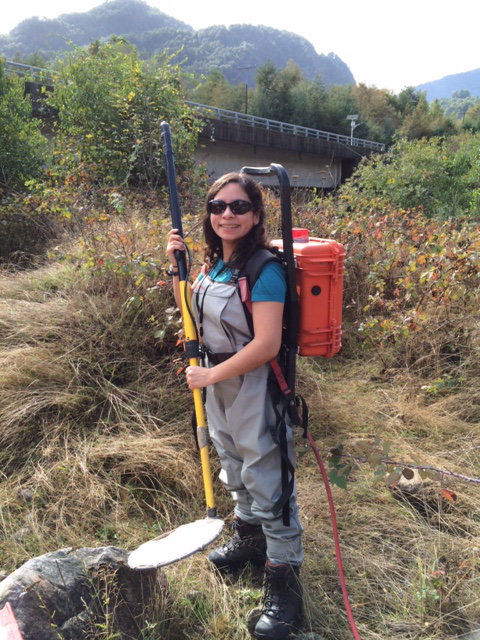 Lisette Delgado (2015- )
Lisette Delgado (2015- ) My research interests are in the area of
population genetics
and evolution. My doctorate research focuses on understanding at the
molecular
level the evolutionary and ecological differences between two life
history types
of Galaxias maculatus, a widespread freshwater
and diadromous fish in the
southern hemisphere. The ancestral type of this species is a diadromous
form (that
migrates from freshwater to the sea during the larval stage), while the
alternative life history type, a freshwater resident form, is the
derived type.
I am examining the phylogeographic relationship among diadromous and
resident
populations across the species’ latitudinal range in Chile using SNP
markers
identified through RAD sequencing and capture methods. Furthermore, I
am trying
to identify the evolutionary mechanism underlying these two life
histories with
a common garden setup and the use of transcriptomics.
 Angela P.
Fuentes-Pardo (2011- )
Angela P.
Fuentes-Pardo (2011- ) I am interested in using molecular genetics methods to examine ecological and evolutionary issues regarding endangered or commercially exploited aquatic organisms, and in the transfer of this knowledge to conservation planning, including the design of marine reserve networks and fisheries management in general. Currently, I am examining neutral and adaptive genetic variation within and among populations of spring- and fall-spawning herring Clupea harengus harengus in the Northwest Atlantic. My goal is to improve our understanding of the roles played by historical and contemporary factors in shaping observed patterns of variation in a marine exploited fish.
I am also involved in a project led by the ECOMANGLARES Research Group from Universidad del Valle, Colombia, the aim of which is to estimate genetic population structuring and connectivity among wild populations of the estuarine bivalve Anadara tuberculosa (common name piangua) along the Colombian Pacific coast. The objective of this initiative is to contribute to the assembly of a sustainable fishery management plan for this species. I also participate in a research initiative led by the BIOMMAR Laboratory from Universidad de los Andes, Colombia, on the coevolution of marine snails of the genus Simnia with seafan octocorals in the Eastern Pacific.
Email: apfuentes [at] dal.ca
Honours Students
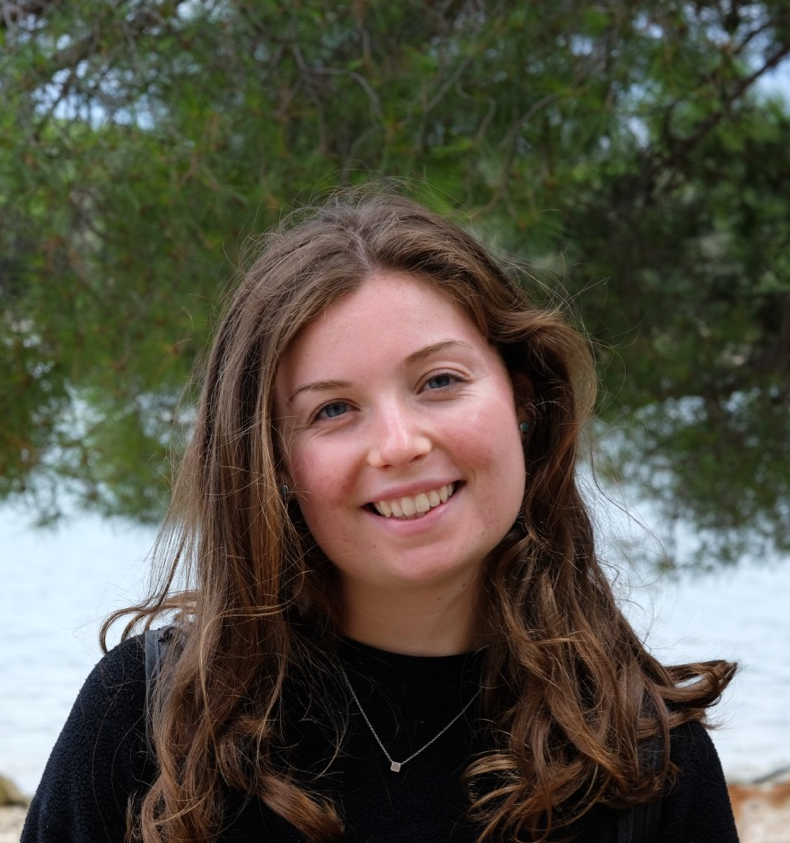 Annie
Simons
(2017- )
Annie
Simons
(2017- )
 Daniela
Notte
(2017- )
Daniela
Notte
(2017- )
Term Positions
Connor Booker (May-Aug 2014) and (Jan-Apr 2015)
Shreeram Senthivasan (UoT - USRA) (May-Aug 2015)
David Malloy (Co-Op May-Aug 2015)
Morgan Colp (Co-Op May-Aug 2015)
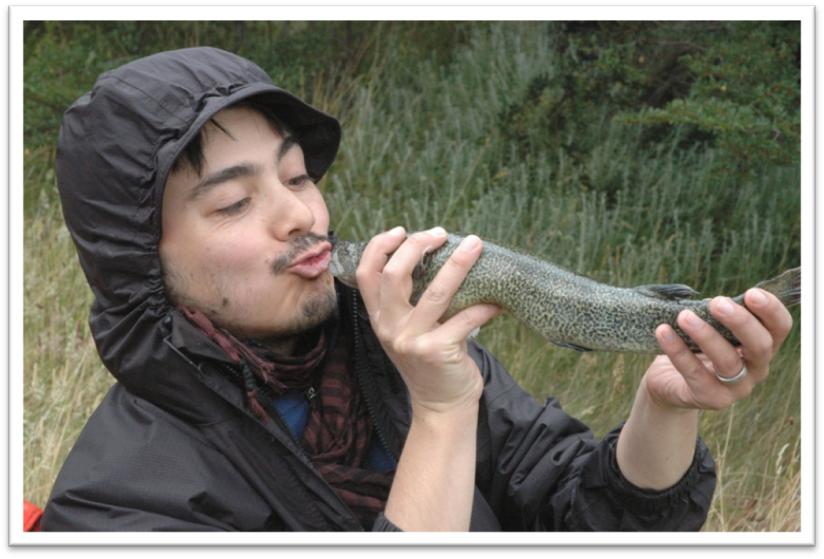 Ivan
Vera-Escalona (2018)
Ivan
Vera-Escalona (2018)My research addresses questions on the ecology and evolutionary
biology of one of the most widespread and intriguing native freshwater
fish species in Patagonia, Galaxias platei. In an effort to understand
issues of connectivity and molecular diversity in this species, I am
examining variability at neutral (microsatellites) and functional (MHC)
molecular markers. Fieldwork is conducted in two river drainages in
Chile, which contrast in their spatial arrangement and complexity. The
San Pedro river drainage in south-central Chile is a simple system
located in the northern range of the species distribution, in an area
that has been highly impacted by humans, with a high incidence of
introduced salmonids. The other drainage, the Serrano River drainage,
is a dendritic system in southern Patagonia in an area far less
impacted by humans and partly free of introduced salmonids. I am
examining genetic diversity and connectivity patterns among G. platei
populations in both river systems in an effort to contrast landscape
attributes and the presence/absence of invasive species.
Email: iv400568 [at] dal.ca
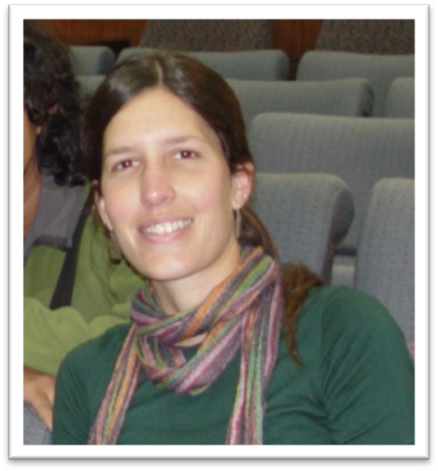 Berenice
Trovant (2009-2015) (co-supervised with JM Orensanz and N Basso)
Berenice
Trovant (2009-2015) (co-supervised with JM Orensanz and N Basso) I am interested in phylogeography. For my PhD I am examining the
phylogenetic relationships and phylogeographic patterns exhibited by a
species complex of intertidal small mussels of the genus Brachidontes.
The group inhabits the high intertidal zones of rocky shores and
exhibits an antitropical distribution in the western Atlantic: species
within the group are distributed in cold- and warm-temperate regions of
the northern and southern hemispheres but are absent from the tropics.
In the southern hemisphere, their distribution has been affected by the
West Wind Drift, the largest and most powerful ocean current in the
world. Taxonomic studies within the group have generally been based on
shell morphology, but high phenotypic variability has led to taxonomic
confusion. My objectives are to clarify the status of the nominal
species of Brachidontes from the southwestern Atlantic using genetic
information, and to investigate their phylogenetic relations with other
species in the group including those inhabiting the northern hemisphere
and those that have been affected by the West Wind Drift.
Email: trovant [at] cenpat.edu.ar
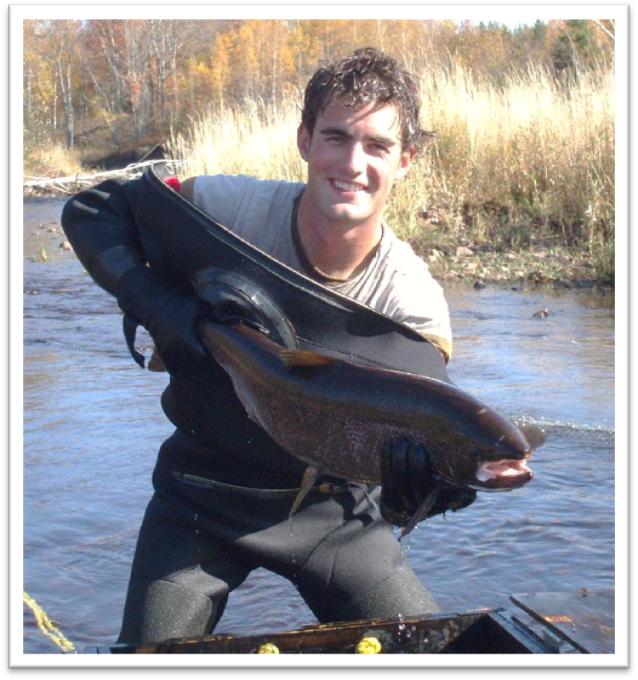 Edmund
Halfyard (2009-2014) (Co-supervised with Fred Whoriskey)
Edmund
Halfyard (2009-2014) (Co-supervised with Fred Whoriskey)
I am interested in salmonid ecology, population regulation, the impacts
of non-native fishes and recreational fisheries. My research at
Dalhousie is focused on estuarine and coastal near-shore mortality in
Atlantic salmon, namely the first 4-8 weeks after they leave their
natal rivers and begin the marine-phase of their anadromous life
history.
 Tyler
Zemlak (2006-2011) - The influences of Quaternary processes on native
freshwater diversity in Patagonia : molecular insights from the
galaxiid fishes
Tyler
Zemlak (2006-2011) - The influences of Quaternary processes on native
freshwater diversity in Patagonia : molecular insights from the
galaxiid fishes
For my PhD research I employed molecular tools in an attempt to
better understand what past and present factors are responsible for
shaping contemporary genetic diversity within species of the family
Galaxiidae inhabiting Patagonia, South America. I used a variety of
molecular markers within several contexts, including phylogeography,
taxonomy and population genetics, to address questions relating to
evolution, biogeography and conservation biology. I am currently a
postdoctoral researcher in the Faculty of Medicine at Dalhousie
University. My primary focus is the development of an alternative
treatment for metastatic cancer using synthetic variants of a naturally
occurring protein found in the Atlantic flounder.
Email: tzemlak [at] dal.ca
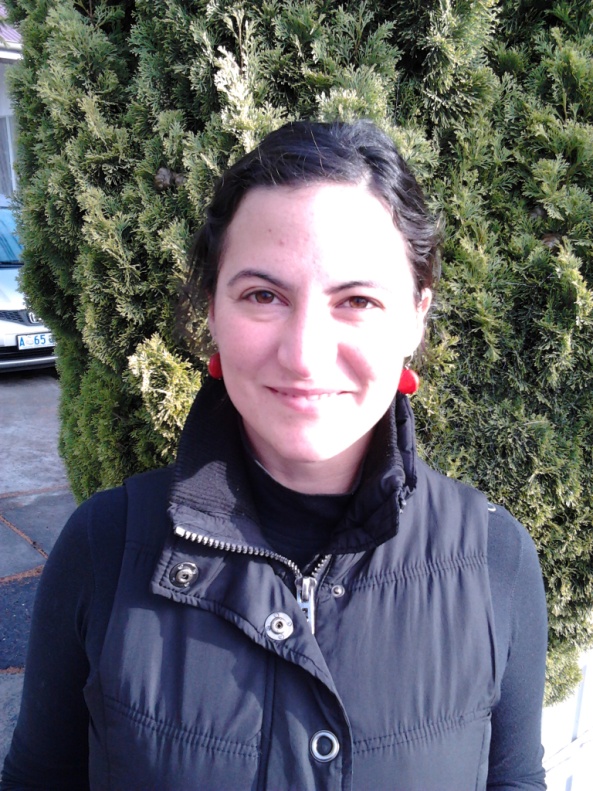 Cecilia
Carrea (2006-2011) - Ecology, genetics and life history of Galaxias
maculatus along two important basins in Patagonia
Cecilia
Carrea (2006-2011) - Ecology, genetics and life history of Galaxias
maculatus along two important basins in Patagonia
My research interests include applying molecular genetic tools to
help answer ecological and evolutionary questions. During my PhD I
examined molecular and phenotypic (body shape, meristic traits)
variability in Galaxias maculatus, a southern hemisphere fish species
native to Patagonia. I developed and used microsatellite markers to
study the interaction among evolutionary forces (e.g., genetic drift,
gene flow) and landscape features in Patagonia, and their role in
shaping the neutral genetic structure among populations of this
abundant and widespread Patagonian fish. I studied G. maculatus
populations in two important drainages in Argentina: The Negro River
drainage in northern Patagonia, and the Santa Cruz river drainages in
southern Patagonia. G. Maculatus exhibits a high degree of plasticity
in life history, with diadromous, landlocked lacustrine and landlocked
riverine populations and the two river drainages studied differ in the
types of G. maculatus populations they harbour. The work I conducted
for my PhD assisted in our understanding of the relative importance of
migratory behaviour (gene flow and population structure) for the
establishment of landlocked populations along these two drainages. My
previous experience involved the use of mitochondrial DNA sequences in
order to identify larvae of two Galaxias species at the Division of
Evolutionary Molecular Systematics at Lund University in Sweden.
Currently, I am visiting Dr. Christopher Burridge's lab at the
University of Tasmania (Australia), where I am analyzing mitochondrial
DNA data with the purpose of improving our knowledge on the
phylogeography of galaxiid fishes in New Zealand
Email: cecilia.carrea [at] gmail.com
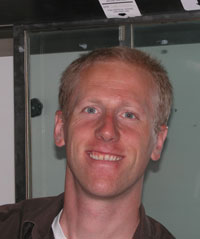 Friso
Palstra (2003-2008) - Currently at the Musium National d'Histoire
Naturelle, Paris, France
Friso
Palstra (2003-2008) - Currently at the Musium National d'Histoire
Naturelle, Paris, France
My research interests are centered on elucidating the genetic and
demographic context for contemporary evolution, and its relevance for
management and conservation. I have addressed these questions in a wide
range of study organisms, such as corals and their endosymbiotic algae
and, more recently, Atlantic salmon. This research typically employs a
combination of molecular genetic markers, demographic analyses and
population & quantitative genetics theory. My more recent and
current involvement with the lab focuses on empirical estimation of the
effective metapopulation sizes in spatially fragmented systems.
Email: palstra [at] mnhn.fr
 Sarah
Salisbury (2013-2015)
Sarah
Salisbury (2013-2015)
Connectivity in a longnose sucker (Catostomus catostomus)
hierarchical metapopulation in northern Labrador
My general research interests include using molecular
genetic techniques to answer questions about fish ecology and
evolution. For my master’s project I am using microsatellite markers to
assess the factors affecting gene flow and metapopulation structure of
the longnose sucker (Catostomus catostomus) in the Kogaluk
River system (Labrador). I particularly want to determine how the
dendritic structure of rivers shapes the genetic structure and
connectivity of fish. I am also interested in identifying which factors
(including distance, elevation, and physical barriers) are most
influential in limiting the dispersal of fish in a natural, pristine
environment. The results of this research will better our understanding
of the connectivity associated with natural river systems and allow for
the development of improved conservation management strategies.
Email: Sarah.Salisbury [at] dal.ca
 Erika
Anahi Jorquera (2010-2014)
Erika
Anahi Jorquera (2010-2014)
Seascape genetics of shrimp in the North West Atlantic
I am interested in the ecology and population structure of marine
pelagic organisms, especially zooplankton and other groups with
planktonic stages. My current research is on population structure in
two marine pelagic shrimp species abundant in the NW Atlantic,
Pasiphaea multidentata and the deep sea species Acanthephyra pelagica.
The region of interest for my research is the Scotian Shelf. Within
this region, the two species 2500 m) that is now a marine protected
area and also, the main sampling area for my study. My main goal with
this research is to evaluate the role of seascape on genetic structure
and assess the extent to which gene flow correlates with ocean current
in the open sea. I will assess the importance of the main currents and
of life history on patterns of population structure
Email: er401812 [at] dal.ca
 Gregory
McCracken (2010-2012)
Gregory
McCracken (2010-2012)
Landscape genetics of lake trout (Salvelinus namaycush) in a
hierarchically structured drainage system in northern Labrador
My research interests include arctic and subarctic ecology. Currently, for my Masters degree I am examining genetic diversity at a suite of microsatellite loci in a population complex of lake trout (Salvelinus namaycush) inhabiting a dendritic drainage system in northern Labrador, the Kogaluk river system. Lake trout inhabit a number of hierarchically interconnected shallow barren ground lakes, which ultimately drain into a deep fjord lake and the Kogaluk river. Using landscape and population genetics approaches my objective is to understand patterns of diversity and regional connectivity and the roles played by landscape variables (e.g., waterfalls, etc). Very little is known about intraspecific diversity among fish in northern Labrador and my studies represent an effort to fill this gap.
Email: gr354555 [at] dal.ca
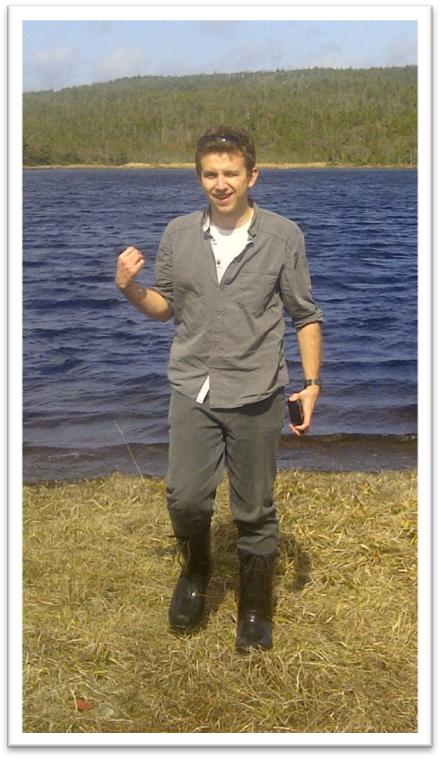 Devon
Johnstone (2010-2012)
Devon
Johnstone (2010-2012)Originally from Montreal, I moved to Halifax to be by the sea and
to study fish and the conservation genetics of small populations. My
research focused on the genetic effective population size (Ne) of a
small Atlantic salmon (Salmo salar) population from Newfoundland that
our lab has shown to be genetically isolated from nearby populations.
Specifically, I used a long term (30 years, corresponding to 6 salmon
generations) collection of demographic data and tissue samples to study
the dynamics of Ne from genetic estimates, and drew comparison to what
would be expected given the known demographics. I showed that mature
male parr (a freshwater juvenile stage) play a significant role in
maintaining genetic diversity in the face of a declining anadromous
(sea-going) adult population size over three decades.
Email: devonjohnstone [at] gmail.com